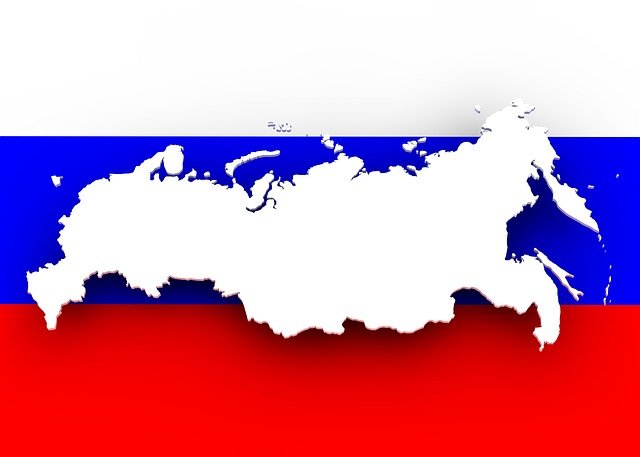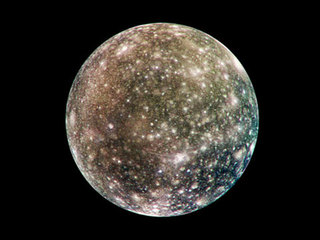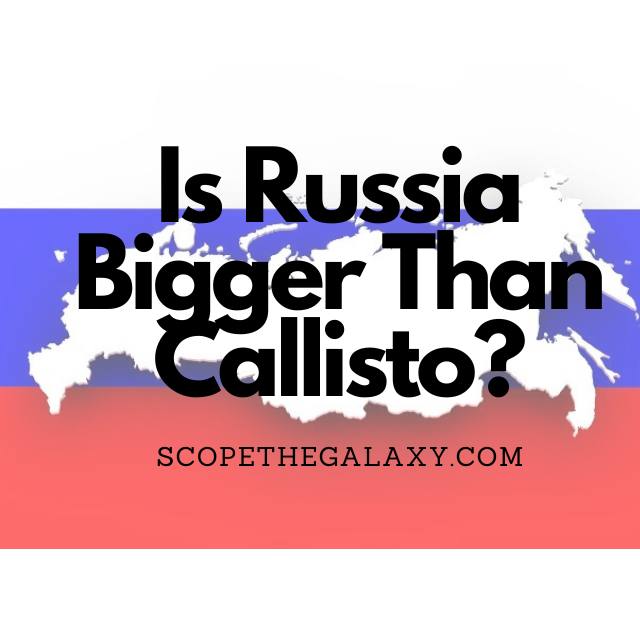*This post may contain affiliate links. This means we may make a commission if you purchase an item using one of our links*
Russia is Earth’s largest country, where it has a surface area of 17.1 million sq. kilometers and a volume of 632.7 million cubic kilometers while Callisto is a spherical entity with a surface area of 73 million sq. kilometers and a volume of 59 billion cubic kilometers.
Therefore it does makes sense why a spherical body would be bigger overall however, if you want a more detailed look at what makes each body as big as they are, continue reading as it will discussed in more detail below.
How Big Is Russia?

Based purely on surface area Russia has the most surface area amongst every country in our solar system, which is more than a large a variety moons across our solar system, the likes of which includes Pluto’s largest moon Charon, Uranus’ moon Titania among numerous others.
From east to west Russia encompasses roughly 9,000km, with the entire surface area of the country adding up to roughly 17.1 million km². The end to end length of Russia is more the double that of the moon and 4 times the diameter of Pluto.
Russia also has 2 mountain ranges, which are the Ural Mountains and the Caucasus Mountains which make up a large portion of the countries surface area.
The Ural mountains have a surface area of 2.225 million km² with the overall end to end range of the mountains roughly 2,500km. The northern region of these mountains have mountains that average peaks of around 1,000m so it’s not necessarily the tallest regions in the world but still very tall nonetheless.
As for the Cacasus Mountains, they are far smaller with a surface area of 477,488 km² with the largest mountain in the region called Mount Elbrus with a peak of 5,642m.
in regards to the depth of Russia’s crust, that is estimated to be 37km on average. If we were to multiple Russia’s surface area with the average thickness of the crust, Russia’s overall volume would come out to roughly 632.7 million cubic kilometers.
All of these factors, such as the height of the mountains, to the end to end distance from east to west and thickness of he countries crust add up to make Russia the literal biggest country on Earth and bigger than a fair share of moons that orbit the other planets in our solar system.
How Big Is Callisto?

Callisto is a moon of Jupiter and the third largest moon in the Solar System, which was discovered in January 1610 by Galileo Galilei.
The diameter of Callisto is 4,820.6km, while its surface area is 73,000,000 sq. km, a far greater expanse than that of the Asian continent. Still, like our largest country, the terrain of Callisto varies, and it is the most heavily cratered object in our solar system.
Calisto’s volume is an impressive 59,000,000,000 cubic km, giving it a similar size to the planet Mercury (60.8 billion cubic km). Callisto is classified as a moon and not a planet because it orbits Jupiter rather than the Sun. Still, it is one of the largest moons in the solar system and covers an impressive expanse.
This mega moon is 99% as big as Mercury, but it only possesses a third of its weight because of the moon’s mixed composition.
Callisto’s average density is 1.83 cubic cm, which suggests that it is made of roughly equal parts of water ice and rocky material, plus additional volatile ices (like ammonia). Scientific research into the moon suggests that 49-55% of its total constitution is ice. The remaining rock is likely composed of silicates, chondrites, and iron oxide.
Still, the water ice only accounts for between 25 and 50% of the planet’s overall mass.
The surface of Callisto is heavily cratered and has a dark appearance. Scientists believe that the bright patches consist mainly of ice, while the darker patches show areas where the ice has eroded. The most distinctive crater is Valhalla, with its bright central region.
In the past, many scientists thought this huge “hunk of rock and ice” was “boring” because it had no shifting tectonic plates and no volcanic activity. At first appearances, it seemed to be a dead world.
Still, more recent research by NASA scientists concludes that Callisto could house a salty ocean interacting with rocks that are more than 250 km below the surface. Combine this with detections of oxygen in the exosphere, and today Callisto is included in the list of places where life could exist beyond Earth.
Callisto is 180 times farther from Earth than our moon, but its large amount of surface ice makes it shine brighter than our moon. Earth’s moon reflects only 0.12% of the Sun’s light, whereas Callisto reflects up to 20%.
Summary
Even if Russia is the largest country on planet Earth and even has a maximum diameter almost double that of Callisto, Callisto is still far and away the bigger of the two bodies.
It has a surface area over 4 times that of Russia and a volume of over 90 times that of Russia, which is down to the moons spherical body.

